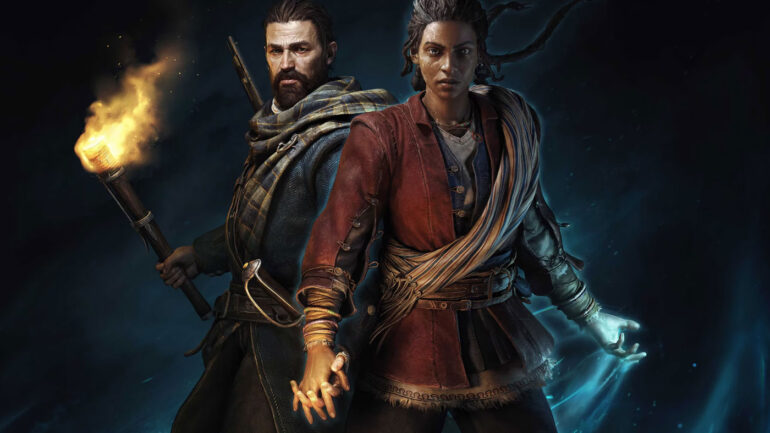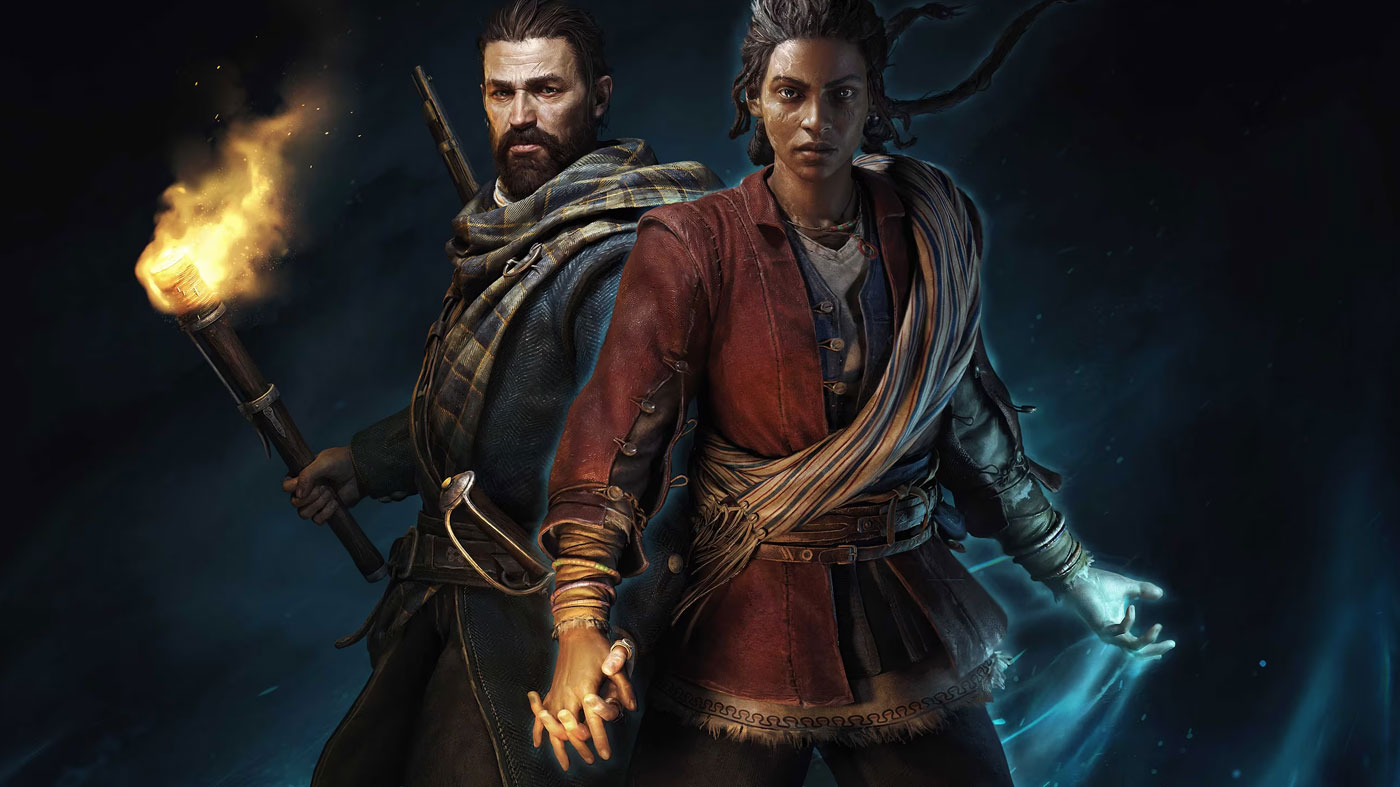Don’t Nod is in an exciting place, juggling projects that feel lower-key like Life Is Strange but still dabbling in the action genre with games like Vampyr and Remember Me. It’s been six years since Vampyr was released, and while I saw the good in the game, it didn’t resonate with me as much as I’d have liked. Banishers: Ghosts of New Eden feels like a natural continuation of what Don’t Nod was trying with Vampyr and is a delightful surprise in many ways.
Banishers: Ghosts of New Eden takes place in the late 1600s. You play as a pair of ghost hunters, or banishers, named Red and Antea. Antea is training Red as an apprentice, but they’re also wildly in love. During the game’s opening mission, Antea is blindsided protecting Red and fatally wounded by a ghost they’re hunting. Now, accompanying Red as a ghost herself, Antea must find a way to defeat the evil that murdered her. It’s more complicated, too, as there are questionable ways to bring Antea back, though not without consequence.
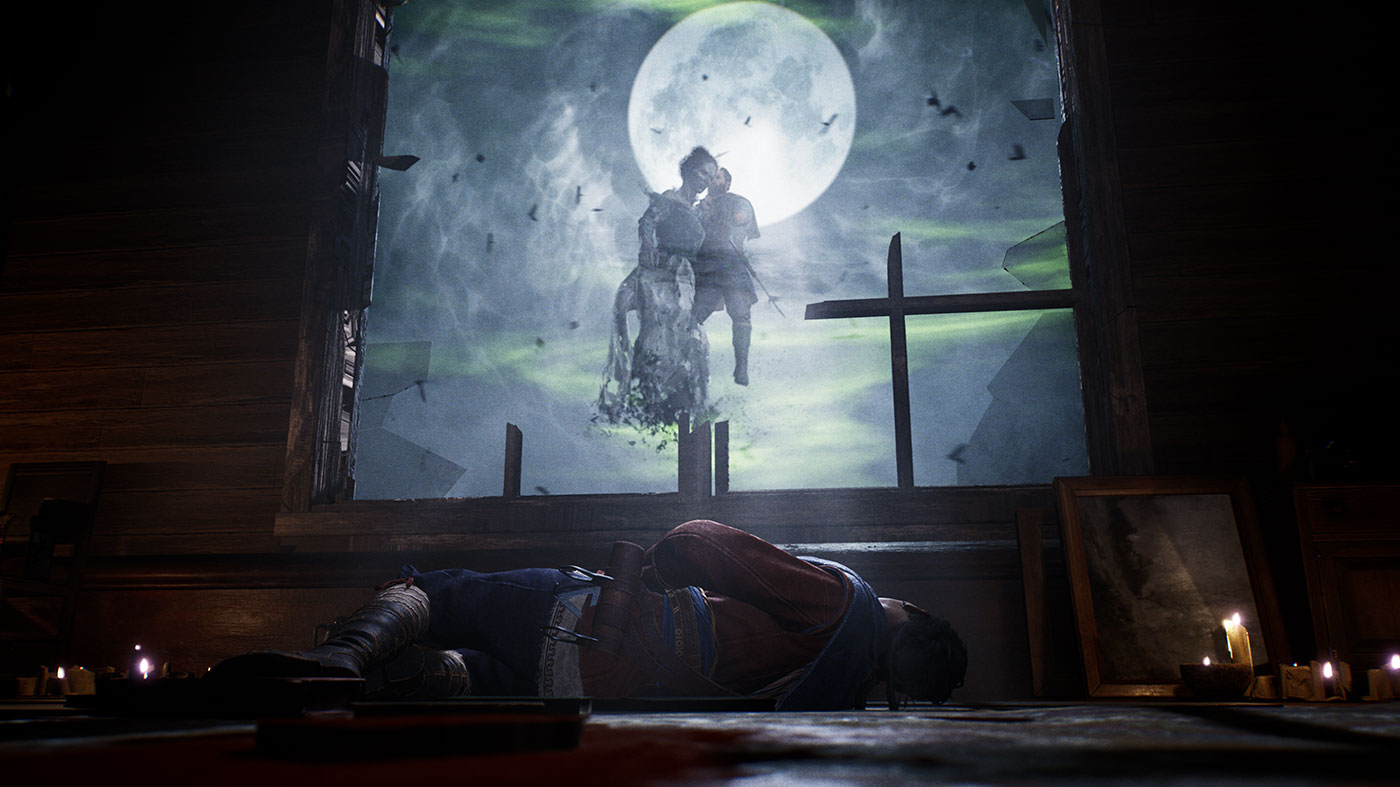
Choice permeates so much of Don’t Nod’s games, and Banishers is no exception. From the get go, Red must swear an oath to Antea over whether he’ll move her spirit on or sacrifice the living to bring her back. That sole underlying choice will represent a dilemma for most players – partly because Red and Antea’s relationship is so well-defined. They have typical but charming banter, significant character development between them, and a strong connection that endears them to the player.
That strength of relationship is why Banisher’s choices can be so hard to make. Every case you investigate gives you a choice on how to bring closure to those involved, giving options to move spirits on peacefully or violently. Other options allow you to sacrifice the living, bringing Antea one step closer to lying with you once more. It’s obviously never as clear-cut as you’d hope, though. While I was keen to uphold the oath I made with Antea, I genuinely felt awful about some of the questionable choices I made along the way.
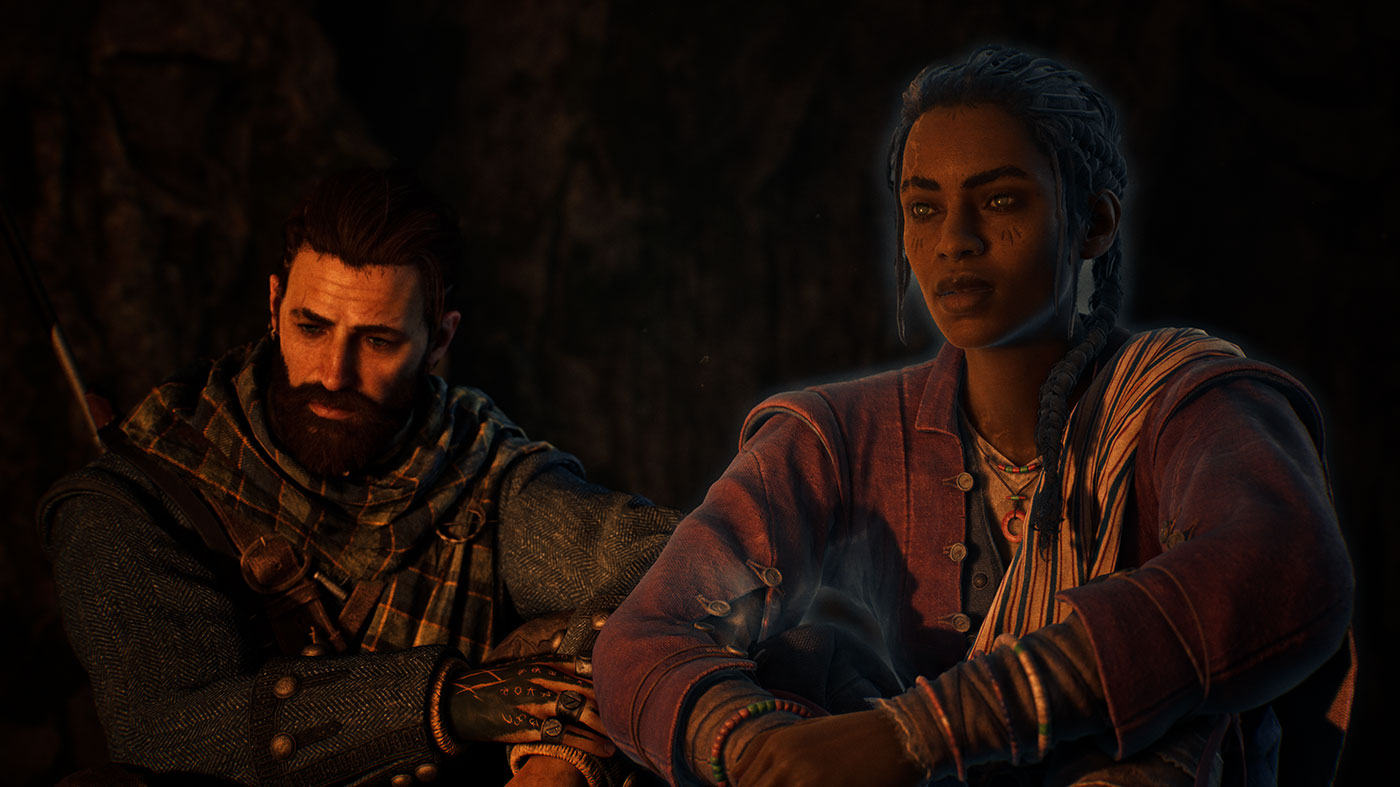
These choices have obvious ramifications as the story comes to a close, but smaller consequences of them are felt throughout the world. Settlers might snidely remark about a choice you made in a previous quest or might even raise the price of their goods if you killed somebody they were friends with. It’s subtly consistent but not in the forced black-and-white manner that most games use.
THE CHEAPEST COPY: $89 WITH FREE SHIPPING FROM AMAZON
But while choice and story are important to the experience, it’s especially remarkable to discover just how well Banishers plays. If you’ve played Vampyr, it’s obvious this is a spiritual successor to that game in many ways. But Banishers feels bigger and grander in ambition than Vampyr ever was and is better in every way. An open-world adventure at heart, Banishers has you travelling through a haunted America, solving both minor and major hauntings as you journey between settlements. It feels, in many ways, like a road film of sorts. Except that the downtime between the major cases is just as compelling as the conflicts you’ll engage in during the main questlines.
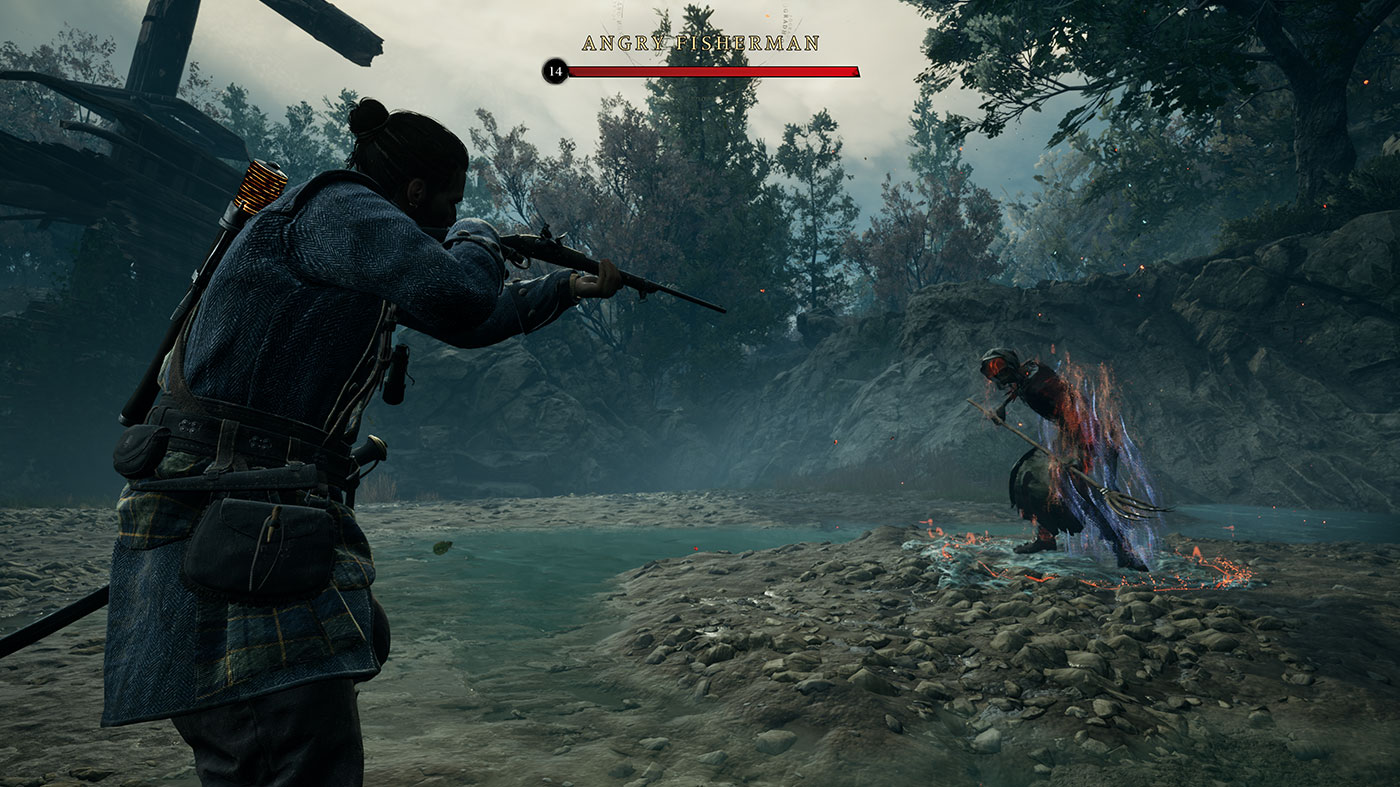
This is because Banishers’ world is densely designed and a joy to explore. Distracting in all the right ways, there were many times when I’d inadvertently take the wrong path and loop around to a settlement I’d just left. Along the way, I’d find various activities to complete and open shortcuts that helped me get around the area quickly. Perhaps that’s one of the greatest compliments I can pay to Banishers – there are fast travel options, but the world is so satisfying to explore, and so inviting that I rarely feel the need to do so. It feels like a meaty, Ye Olde style Metroid, which is a combination of period and gameplay design that I never realised I’d needed until now.
When you’re not investigating, you’ll be fighting. Both Red and Antea can be switched between in combat to rack up massive damage through combos. Red can attack with his sword and rifle, while Antea can attack with supernatural punches and abilities. Combat essentially rewards proper synergy between Red and Antea – freezing someone with Antea and finishing them off with Red will reward you with massive damage, for example. But all the abilities and options contribute to a combat system that flows nicely.
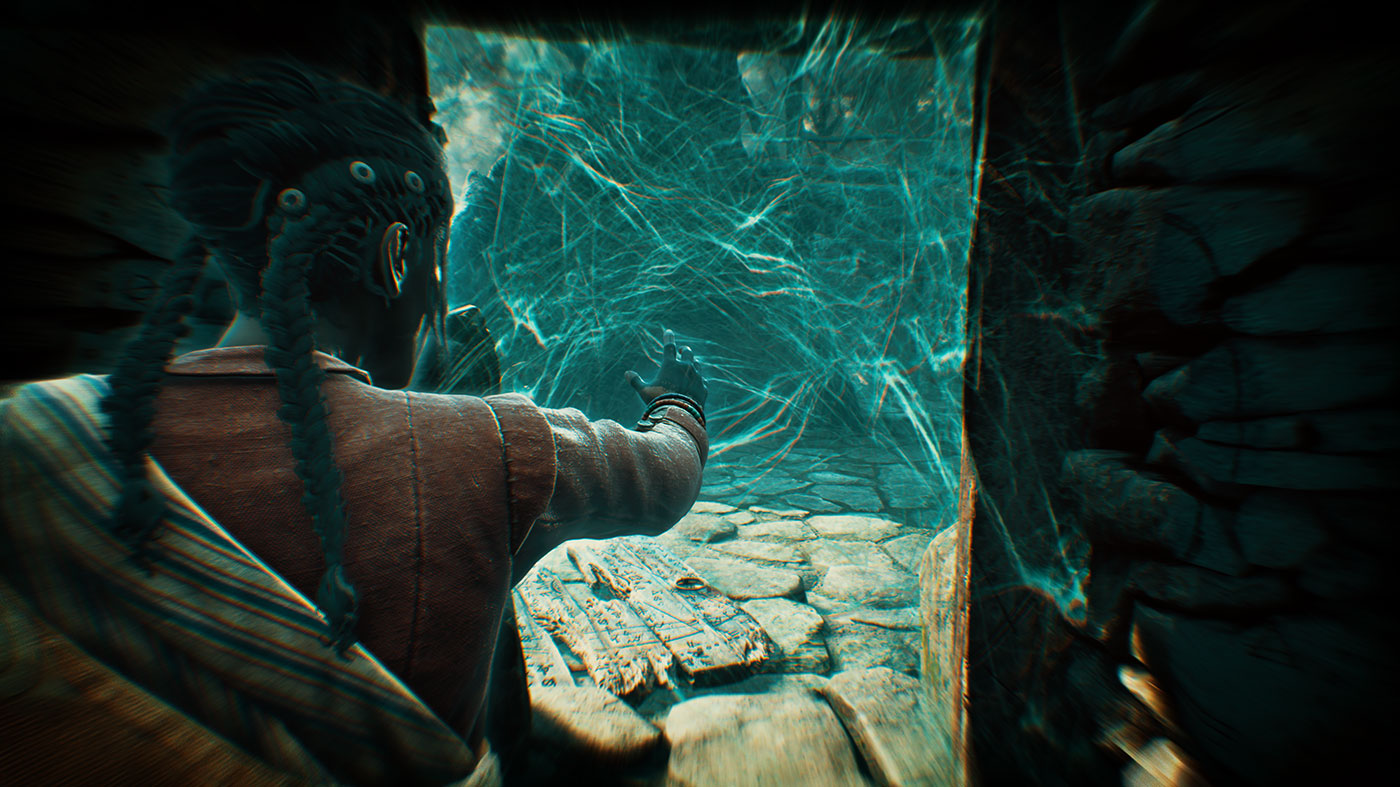
Combat is thus supplemented by a skill tree, which offers a great degree of flexibility to your approach. Each ability or perk provides greater synergy between Red and Antea. Red might be able to recover more energy for Antea to use with his rifle, for example. But each point on the skill tree, once unlocked, can be alternated with another skill, allowing you to change up your build as you go. This flexibility doesn’t feel as cheap as a full respec, and once again features a good sense of choice, as opposed to skill trees in some other games that end up filled out anyway.
Optional content is split into activities and haunting cases. Activities are fairly typical open-world fare – you fight off a wave of enemies, find a spot of treasure to dig up or even find items to remove a curse from a treasure chest. But the haunting cases easily stand out here. They’re smaller stories that focus on the settlers at each settlement. They’re all well-written and nuanced tales that’ll once again have you making difficult choices at the end of each. They don’t feel like side quests either and are just as compelling as the main quests.
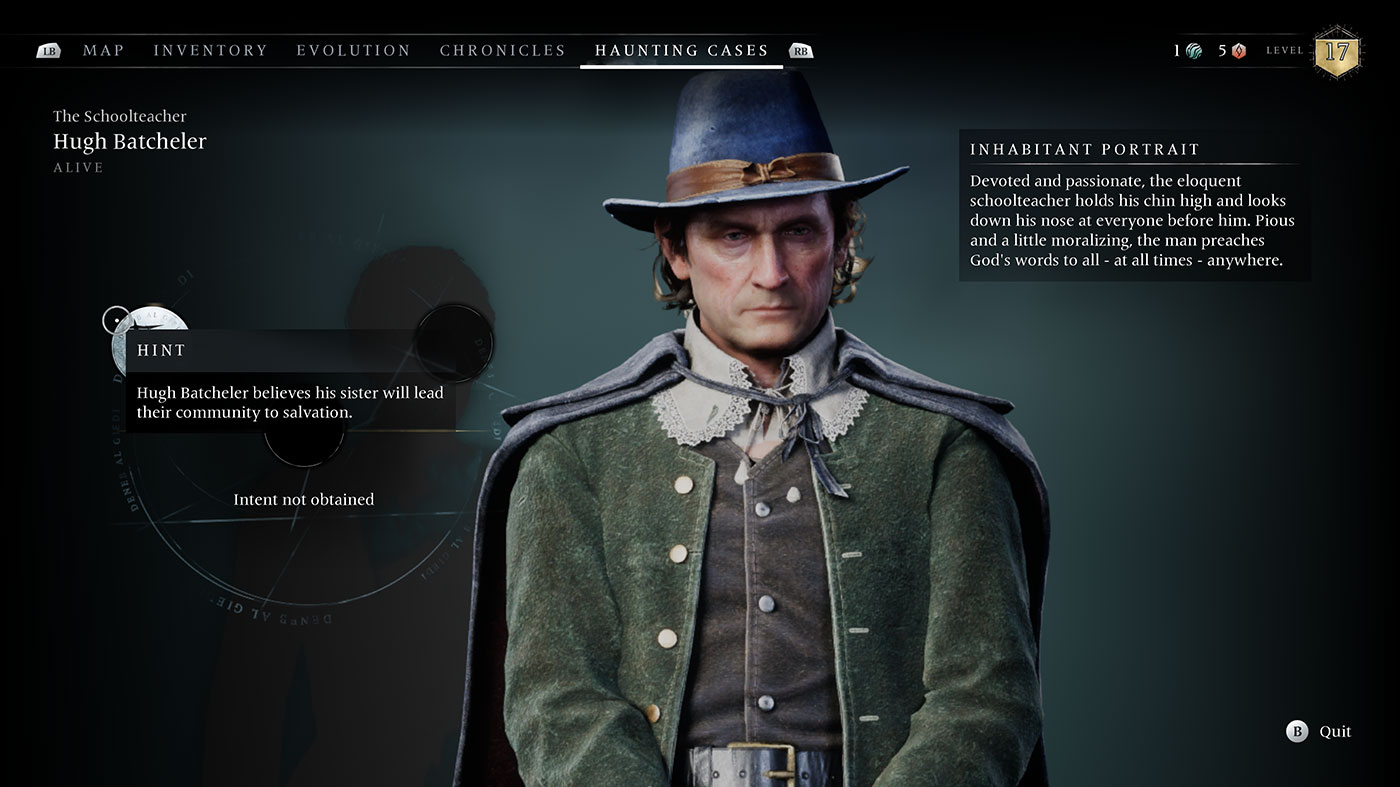
That being said, how much you engage with them is up to you. The main story path itself would take most players between twenty to thirty hours to finish, but you can easily double that if you take your time and explore everything that New Eden has to offer. It’s worth mentioning that this isn’t a case of quantity over quality either – the sheer variety of objectives and cases helps keep things fresh. This isn’t as vast as your typical Ubisoft open-world or games like Spider-Man or Horizon. Instead, this is a much smaller but denser world to explore.
Surprisingly, Banishers: Ghosts of New Eden is also a looker. The artistic direction is strong, but even the performance is rock solid. There’s a ton of detail in visual density and ambient sound work to help sell this bleak but real world of New Eden.
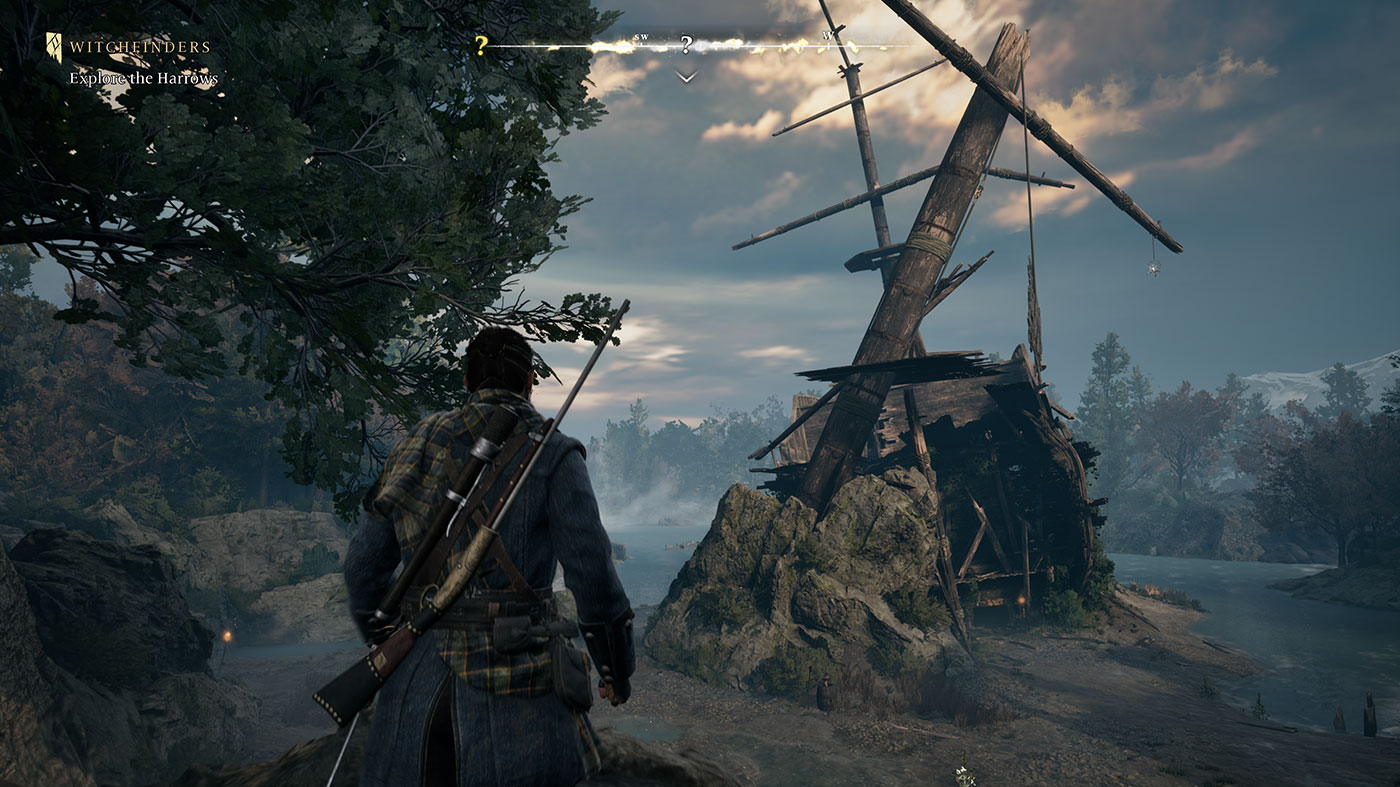
But nothing rises above as much as the dark ambient original score in Banishers. It employs ominous and gloomy notes to create a melancholic atmosphere. It’s the perfect soundscape for your adventure through a world that’s slowly succumbing to a haunting curse, but also for the depressing fact that Antea is dead, and you might not be bringing her back. The entire adventure is made better by great performances, too – Russ Bain and Amaka Okafor are worth calling out for their often cute and playful chemistry together as Red and Antea, respectively. They really do carry so much of the adventure.


